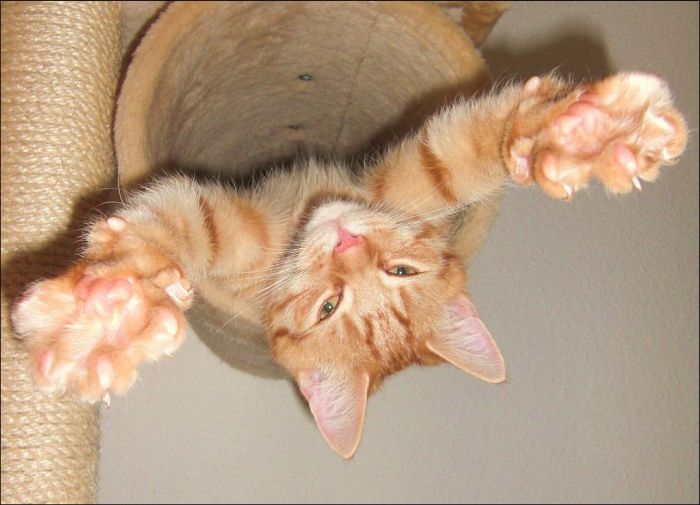|
|
Cute Cat
|
Several ancient religions believed that cats are exalted souls, companions or guides for humans, that they are all-knowing but are mute so they cannot influence decisions made by humans. In Japan, the Maneki Neko is a cat that is a symbol of good fortune. Although there are no sacred species in Islam, some writers have stated that Muhammad had a favorite cat, Muezza. He is reported to have loved cats so much that "he would do without his cloak rather than disturb one that was sleeping on it".
Freyja—the goddess of love, beauty, and fertility in Norse mythology—is depicted as riding a chariot drawn by cats.
Many cultures have negative superstitions about cats. An example would be the belief that a black cat "crossing your path" leads to bad luck, or that cats are witches' familiars used to augment a witch's powers and skills. This led to the widespread extermination of cats in Europe in medieval times. The Black Plague was spread by fleas carried by infected rats, and the killing of cats ostensibly caused an increase in the rat population. The killing of cats in Medieval Ypres is commemorated in the innocuous present-day Kattenstoet (cat parade).
According to a myth in many cultures, cats have multiple lives. In many countries, they are believed to have nine lives, but in some Spanish-speaking regions they are said to have seven lives, while in Turkish and Arabic traditions the number of lives is six. The myth is attributed to the natural suppleness and swiftness cats exhibit to escape life-threatening situations. Also lending credence to this myth is that falling cats often land on their feet because of an inbuilt automatic twisting reaction and are able to twist their bodies around to land feet first, though they can still be injured or killed by a high fall.
|
|









